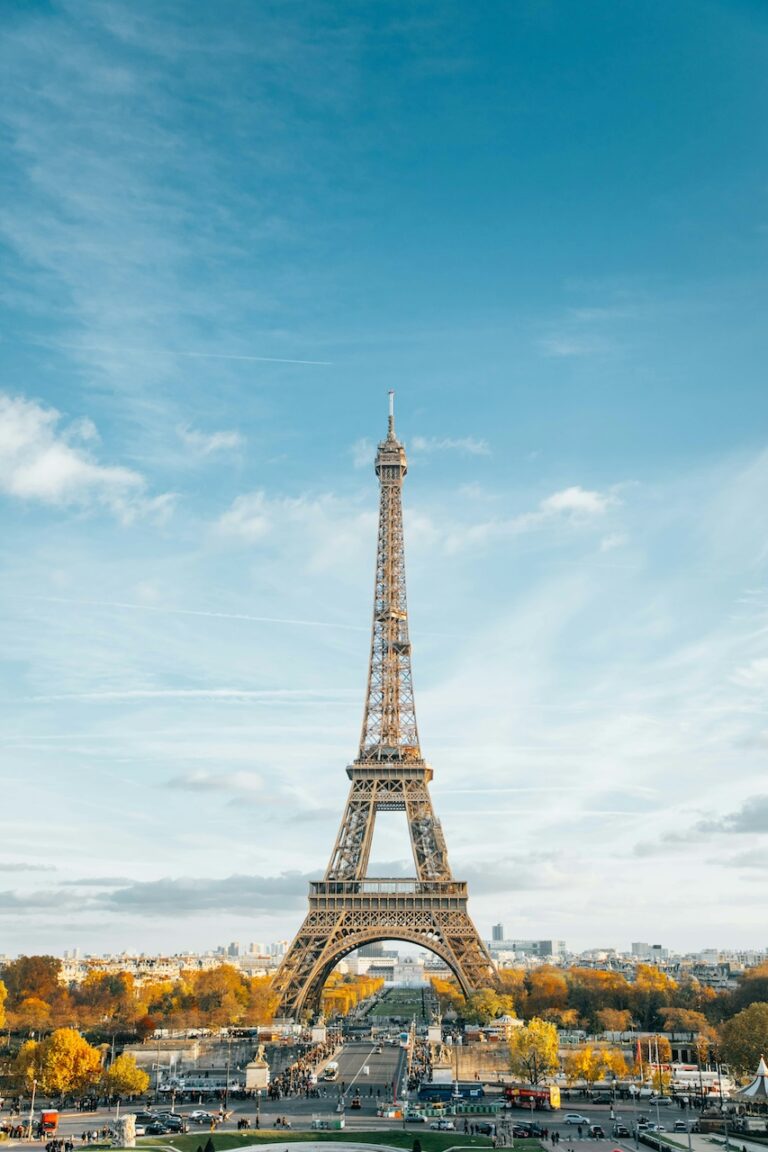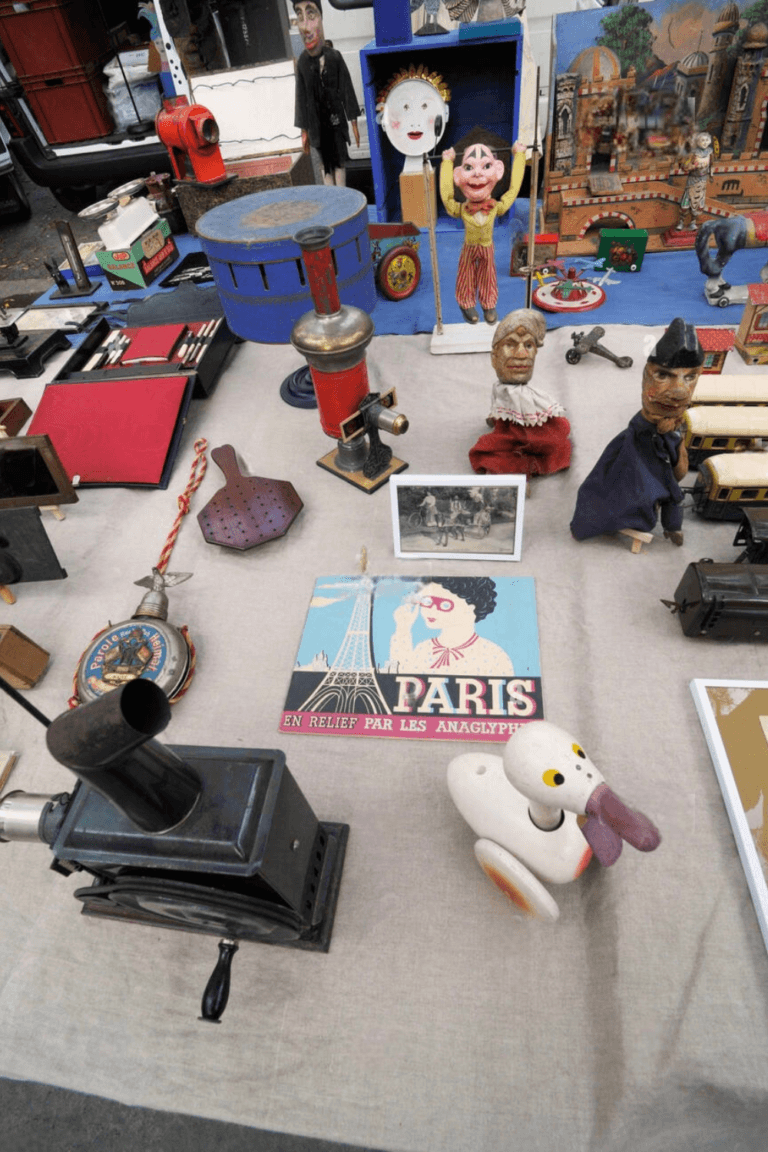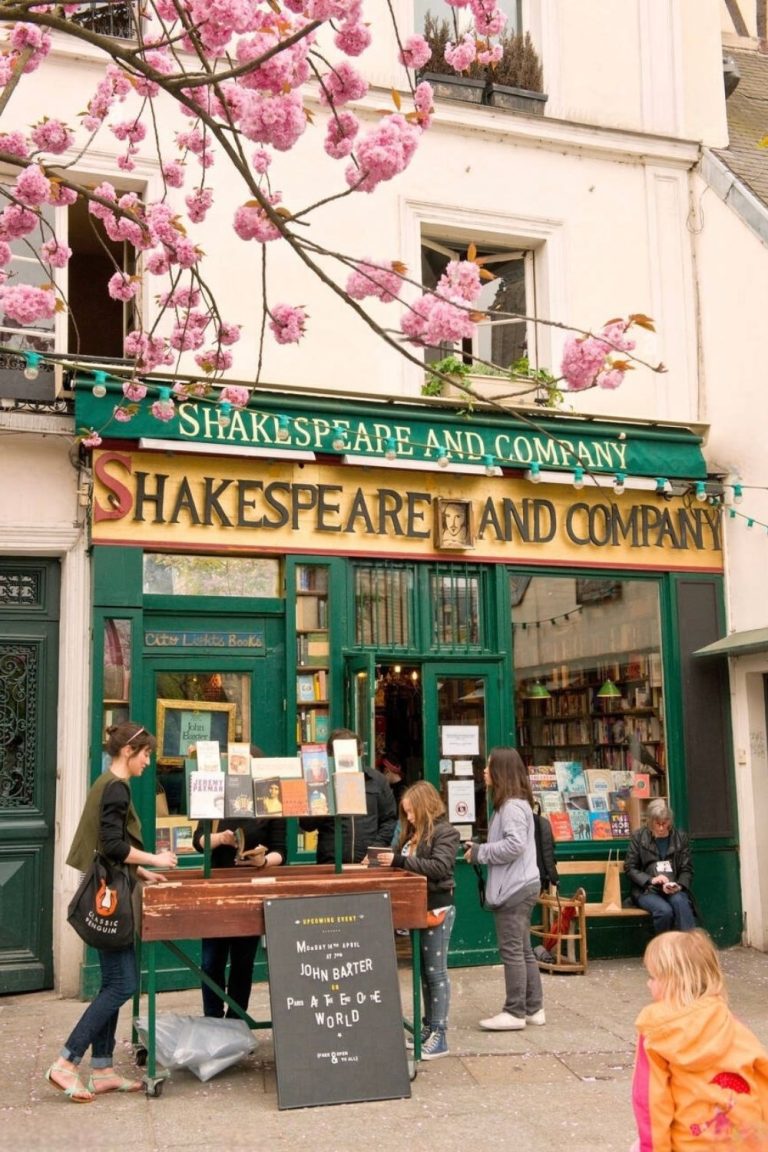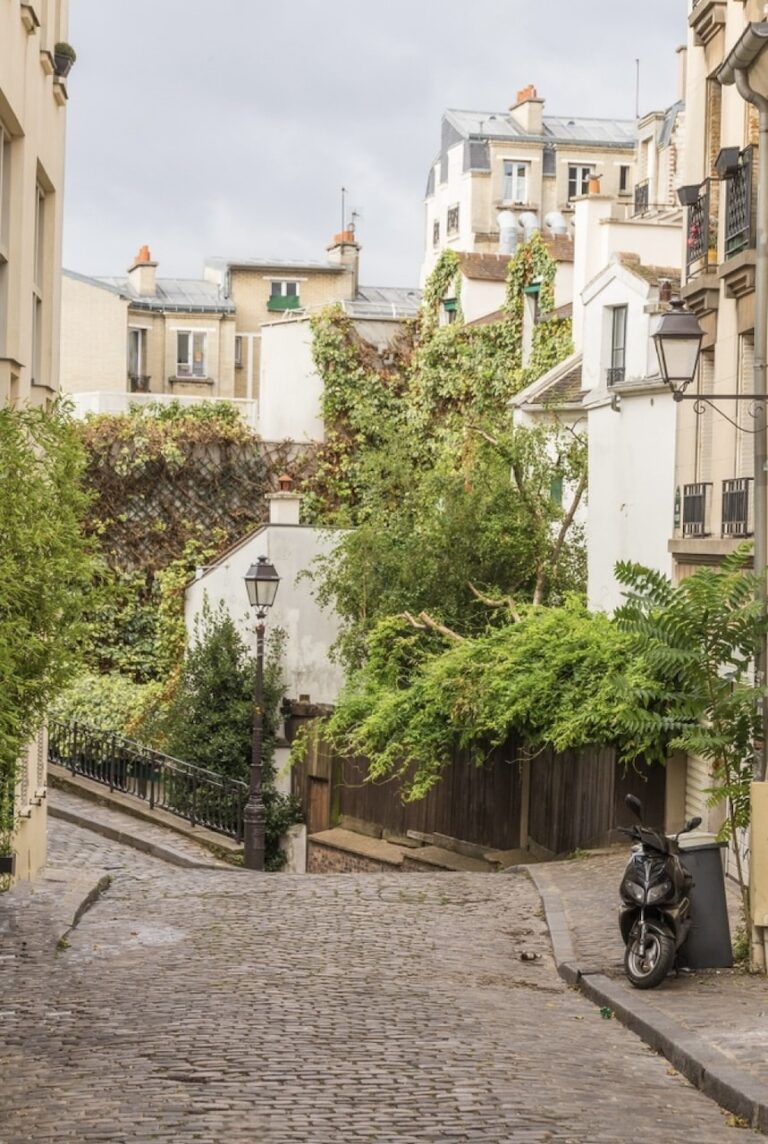First Time to Paris? The Ultimate Insider’s Guide You Need!
Last Updated on October 9, 2024 by April Nicole
Psst! This blog post about first time to Paris contains affiliate links in it which sends me a bit of extra money if you use them… at no extra cost to you. For more info, see the Disclosure Policy. Merci!
Traveling to Paris? Click here to download your free Paris Travel Guide. We’ll help you get ready for your trip!
Visiting Paris for the first time can be both exhilarating and overwhelming.
As someone who has explored every nook and cranny of this enchanting city, I understand the challenges that a first time visitor might face. Navigating through the maze of historic landmarks, chic cafes, and bustling markets can be daunting without the right guidance.
This is where a first time to Paris visitors guide comes in handy. With comprehensive travel tips and insider knowledge, this guide is designed to help you make the most of your Parisian adventure.
From must-see attractions to hidden gems, this guide ensures that your experience is seamless and unforgettable. Having spent considerable time in Paris, I’ve gathered invaluable insights that will help you avoid common pitfalls and enjoy the city like a local.
If you are in a hurry, here’s a summary of first time to Paris:
The Ultimate Guide to Visiting Paris for First Time Travelers
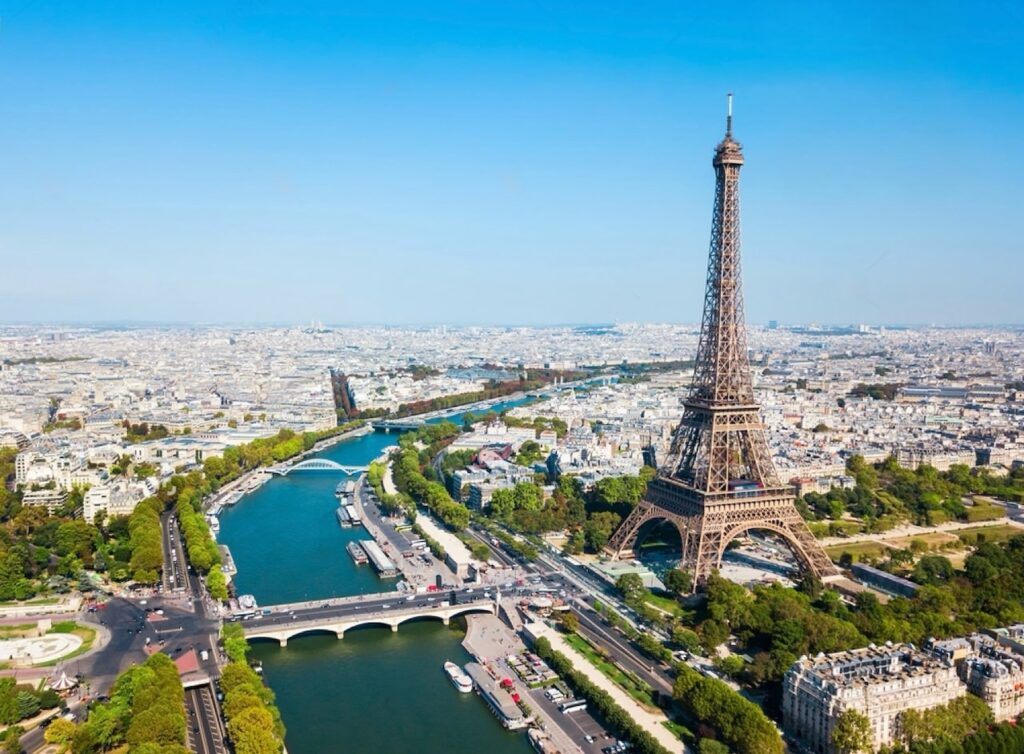
Geography of Paris
Paris, the enchanting capital of France, is divided into 20 arrondissements, or districts, each with its own unique charm. These districts are numbered from 1 to 20, spiraling outward from the city center. Key landmarks such as the Eiffel Tower, Louvre Museum, and Notre-Dame Cathedral are scattered throughout, making Paris a city where every corner holds a piece of history.
Key Districts and Landmarks
1st Arrondissement
- Louvre Museum: The world’s largest art museum, home to the Mona Lisa and countless other masterpieces. A must-visit for art lovers.
- Palais Royal: A historic palace with beautiful gardens and arcades, perfect for a leisurely stroll.
- Place Vendôme: Famous for its luxurious hotels and high-end jewelry shops, this square exudes elegance.
4th Arrondissement
- Le Marais: A historic district known for its medieval streets, trendy boutiques, and vibrant LGBTQ+ scene. Ideal for exploring on foot.
- Notre-Dame Cathedral: An iconic Gothic cathedral on the Île de la Cité, known for its stunning architecture and historical significance.
- Place des Vosges: The oldest planned square in Paris, surrounded by charming buildings and offering a peaceful escape.
7th Arrondissement
- Eiffel Tower: Paris’ most famous landmark, offering breathtaking views from its various levels.
- Musée d’Orsay: Housed in a former railway station, this museum showcases Impressionist and Post-Impressionist masterpieces.
- Les Invalides: A complex containing museums and monuments related to France’s military history, including Napoleon’s tomb. first time to paris
8th Arrondissement
- Champs-Élysées: The most famous avenue in Paris, lined with theaters, cafes, and luxury shops. Ends at the Arc de Triomphe.
- Arc de Triomphe: A monumental arch honoring those who fought and died for France. Climb to the top for panoramic views.
- Place de la Concorde: The largest square in Paris, featuring fountains, statues, and the ancient Egyptian Luxor Obelisk.
18th Arrondissement
- Montmartre: A bohemian neighborhood known for its artistic history, picturesque streets, and the stunning Sacré-Cœur Basilica.
- Sacré-Cœur Basilica: Located at the highest point in Paris, this basilica offers breathtaking views of the city.
- Place du Tertre: A lively square filled with artists painting and selling their work, capturing the spirit of Montmartre.
Weather
Paris experiences a temperate climate with distinct seasons. Summers are warm and occasionally hot, while winters can be chilly but rarely freezing. The best time to visit depends on your preferences for weather and activities, but spring and fall are generally considered ideal for comfortable temperatures and fewer crowds
Seasonal Tips
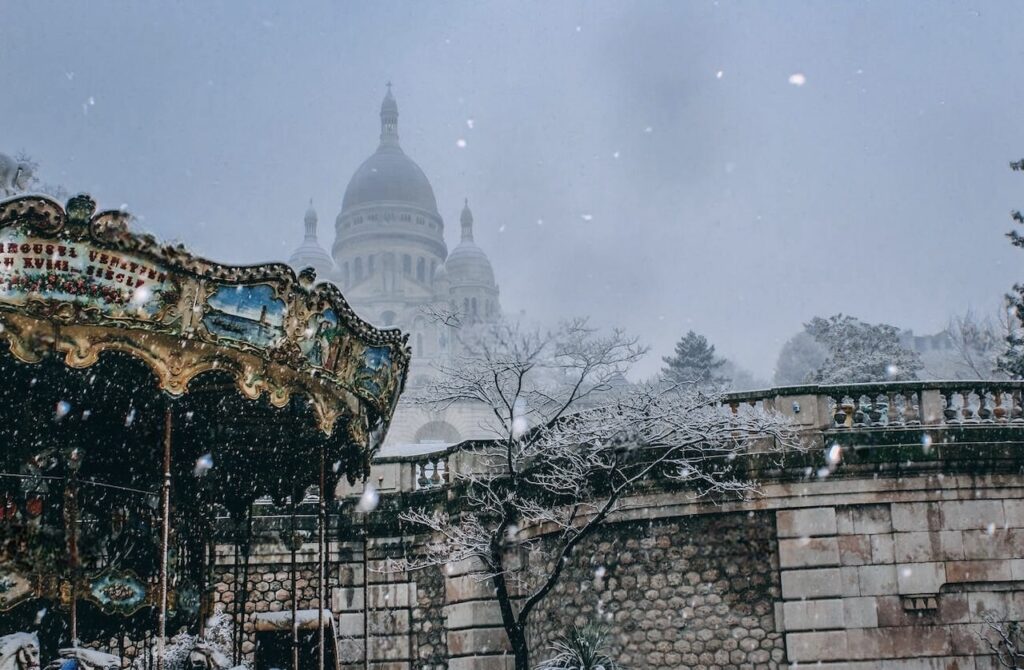
Spring (March to May)
- Mild Weather: Spring in Paris offers mild temperatures ranging from 10°C to 20°C (50°F to 68°F). It’s ideal for outdoor activities like strolling through gardens and parks.
- Packing Tips: Bring layers, including a light jacket, as temperatures can vary throughout the day. Don’t forget an umbrella, as spring showers are common. I keep this travel umbrella in my bag just in case a shower pops up. It is reliable, compact, and affordable.
Check out this post for ideas on what to do in Paris when it rains.
Summer (June to August)
- Warm and Busy: Summer temperatures average between 15°C to 25°C (59°F to 77°F), with occasional heatwaves. It’s peak tourist season, so expect larger crowds at popular attractions.
- Outdoor Events: Take advantage of long daylight hours and enjoy outdoor festivals, concerts, and open-air cinemas. The Paris Plages (Paris Beaches) along the Seine offer a beach-like experience in the city.
- Packing Tips: Pack light clothing, sunglasses, sunscreen, and a hat to protect yourself from the sun. Comfortable walking shoes are essential for exploring. Vejas and other sneakers are very popular right now for men and women.
Fall (September to November)
- Crisp Air and Foliage: Fall temperatures range from 10°C to 15°C (50°F to 59°F). The city’s parks and tree-lined boulevards transform with autumn colors, making it a picturesque time to visit.
- Packing Tips: Bring a warm jacket, scarves, and layers to adjust to the cooler weather. Waterproof shoes and an umbrella are useful for unexpected rain.
Winter (December to February)
- Cool and Festive: Winter temperatures typically hover between 3°C to 7°C (37°F to 45°F). Paris is beautifully decorated with holiday lights and markets, creating a festive atmosphere.
- Indoor Attractions: Explore indoor attractions like museums, galleries, and historical buildings to stay warm. Enjoy winter activities like ice skating and visiting Christmas markets.
- Packing Tips: Dress warmly with a heavy coat, gloves, and a hat. Layer your clothing to stay comfortable both indoors and outdoors. Waterproof boots are recommended for wet or snowy conditions. first time to paris
Language
French is the official language of Paris, and while many locals speak English, learning a few basic phrases can enhance your experience. Politeness goes a long way in France, and even a simple “Bonjour” can make interactions smoother.

Useful Phrases
- “Bonjour” (Hello) – Use this greeting when entering shops, restaurants, or when meeting people.
- “Bonsoir” (Good evening) – This phrase is used in the evening, typically after 6 PM.
- “Merci” (Thank you) – A simple yet essential word to express gratitude.
- “Excusez-moi” (Excuse me) – Use this phrase to get someone’s attention.
- “Pardon” (Sorry) – This is a shorter, more casual way to apologize or get through a crowded area.
- “Parlez-vous anglais?” (Do you speak English?) – A helpful phrase when you need to communicate in English.
- “Où sont les toilettes?” (Where is the bathroom?) – An essential phrase for navigating public spaces.
- “L’addition, s’il vous plaît.” (Check, please.) – Use this when you’re ready to pay at a restaurant.
Do I Need Cash For Paris?
While Paris is increasingly card-friendly, carrying some cash is still advisable. Many small businesses, markets, and some cafés prefer or only accept cash. ATMs are widely available, and it’s a good idea to have euros on hand for convenience.
Cash vs. Card Usage in Paris
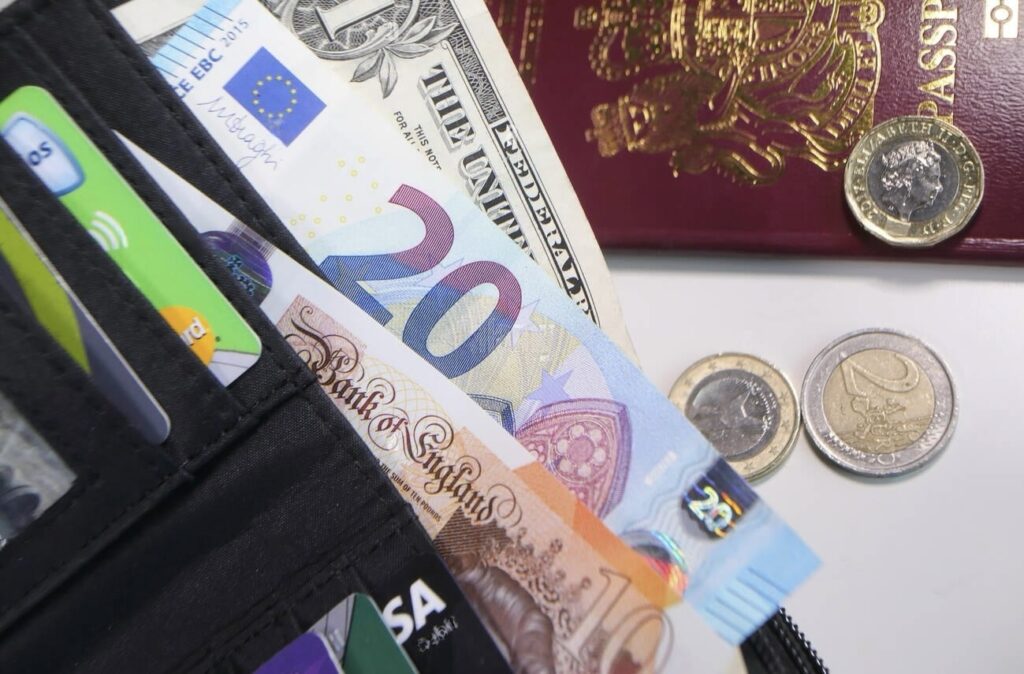
Credit and Debit Cards
- Wide Acceptance: Credit and debit cards, particularly Visa and MasterCard, are widely accepted in Paris. Most hotels, restaurants, and shops take card payments, and contactless payment options are becoming more common.
- Chip and PIN: Ensure your card has a chip and PIN, as this is the standard in Europe. Some places may not accept swipe-only cards.
- Foreign Transaction Fees: Check with your bank about any foreign transaction fees that might apply when using your card abroad. Consider getting a card with no foreign transaction fees to save money. first time to paris
Cash
- Small Businesses: Many small businesses, including independent cafés, boulangeries, and market stalls, prefer cash payments. Some may not accept cards at all or may have a minimum purchase requirement for card transactions.
- Tips and Gratuities: While service is included in the bill at restaurants, it’s customary to leave a small tip (around 5-10%) in cash for excellent service. It’s also polite to tip hotel staff, taxi drivers, and tour guides in cash.
- Emergencies: Having cash on hand is useful in case of emergencies, such as if your card is lost, stolen, or declined.
ATMs and Currency Exchange
- Availability: ATMs (known as “distributeurs” in French) are plentiful in Paris and can be found at banks, metro stations, shopping centers, and tourist areas.
- Bank ATMs: Use ATMs at reputable banks to avoid high fees and ensure a secure transaction. Look for ATMs from major banks like BNP Paribas, Société Générale, and Crédit Agricole.
- Withdrawals: Be mindful of your bank’s withdrawal fees and limits. It’s often more cost-effective to withdraw larger amounts less frequently to minimize fees.
Practical Advice
- Apps: Mobile payment apps like Apple Pay, Google Pay, and Samsung Pay are increasingly accepted in Paris. They offer a convenient and secure way to pay without carrying cash or cards.
- Compatibility: Ensure your mobile payment method is set up and compatible with French payment systems before your trip.
- Know the Costs: Be aware of the potential costs associated with using cards abroad, including currency conversion fees, ATM withdrawal fees, and foreign transaction fees. Choose the payment method that minimizes these costs.
Public Toilets
Finding public toilets in Paris can be a bit challenging, especially for first-time visitors. However, the city offers various options, from free public toilets to facilities in cafés and museums. Knowing where to find them and understanding how they work can make your visit more comfortable.
Types of Public Toilets
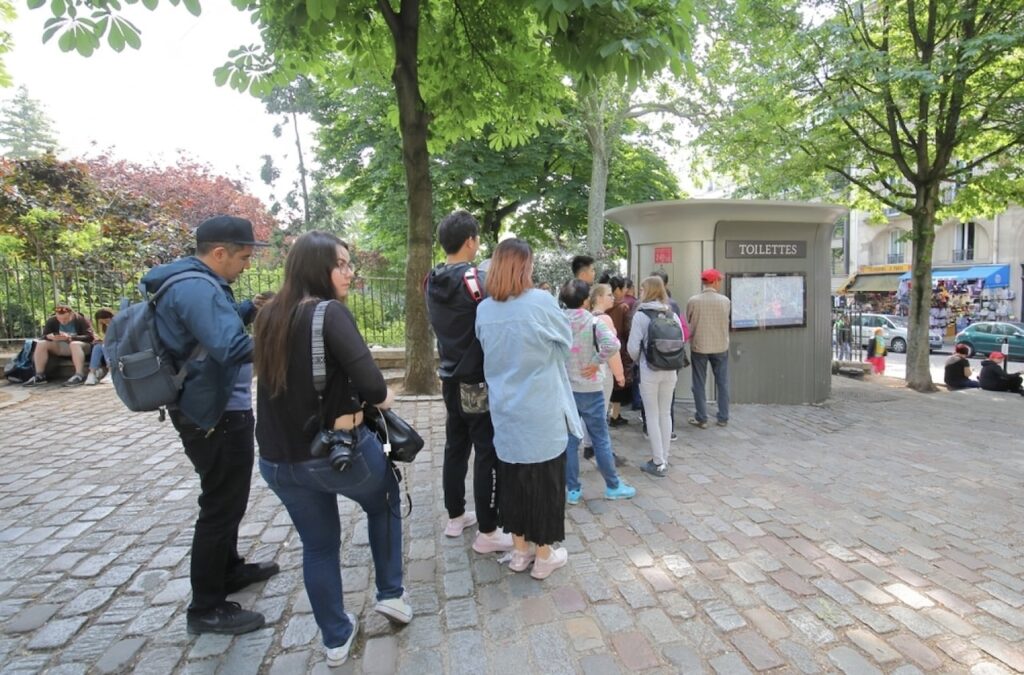
Sanisettes
- Self-Cleaning Facilities: Sanisettes are modern, self-cleaning public toilets located throughout Paris. They are automatic and designed to be hygienic, with a cleaning cycle after each use.
- Free and Accessible: As of 2006, Sanisettes are free to use. They are accessible 24/7 and located in busy areas, parks, and near major attractions.
- How to Use: Enter the booth and lock the door. The toilet will automatically clean itself after you leave, ensuring a clean facility for the next user.
Exploring Paris comfortably is all about knowing where to find essential amenities. Download the ICI Toilettes app today to easily locate public restrooms and enjoy your Parisian adventure without worry. Stay prepared, stay informed, and make the most of your visit to the City of Light!
Tips for Using Public Toilets in Paris
- Carry Change: While most public toilets are free, some older facilities may still require a small fee. Carry some coins just in case.
- Be Prepared: Public restrooms can run out of supplies, so consider carrying a small packet of tissues and hand sanitizer.
- Stay Safe: If a restroom feels unsafe or poorly maintained, trust your instincts and look for another option. Use the ICI Toilettes app to find a better alternative
Practical Advice
- Plan Ahead: Identify restroom locations near the attractions you plan to visit. This can save time and reduce stress when you need to find facilities quickly.
- Stay Hydrated: Don’t avoid drinking water just to reduce restroom visits. Paris offers ample options if you know where to look.
- Use Facilities Wisely: Take advantage of restroom breaks in cafés, museums, and department stores to ensure you’re comfortable during your sightseeing.
Stay in a Very Central Neighborhood
Staying in a central neighborhood can save you time and make sightseeing easier. Popular areas include Le Marais, Saint-Germain-des-Prés, and the Latin Quarter. These neighborhoods offer a mix of historical charm, vibrant nightlife, and convenient access to major attractions.
READ NOW: The Best Arrondissement to Stay in Paris for Your Perfect Trip!
Recommended Areas
Le Marais
- Le Marais, one of Paris’ oldest districts, boasts narrow cobblestone streets and well-preserved medieval architecture, offering a glimpse into the city’s rich history. Known for its trendy boutiques, vintage shops, and unique galleries, it’s a shopper’s paradise. Key attractions include the Picasso Museum, the historic Place des Vosges, and the vibrant Jewish Quarter with its famous falafel shops.
Saint-Germain-des-Prés
- Saint-Germain-des-Prés, a historic hub for intellectuals, artists, and writers, is home to iconic cafés like Café de Flore and Les Deux Magots, famous for their literary and philosophical discussions. This area offers chic boutiques, antique shops, and high-end fashion stores, blending classic and contemporary Parisian style. Explore the Abbey of Saint-Germain-des-Prés, one of Paris’s oldest churches, and wander through art galleries and historic landmarks.
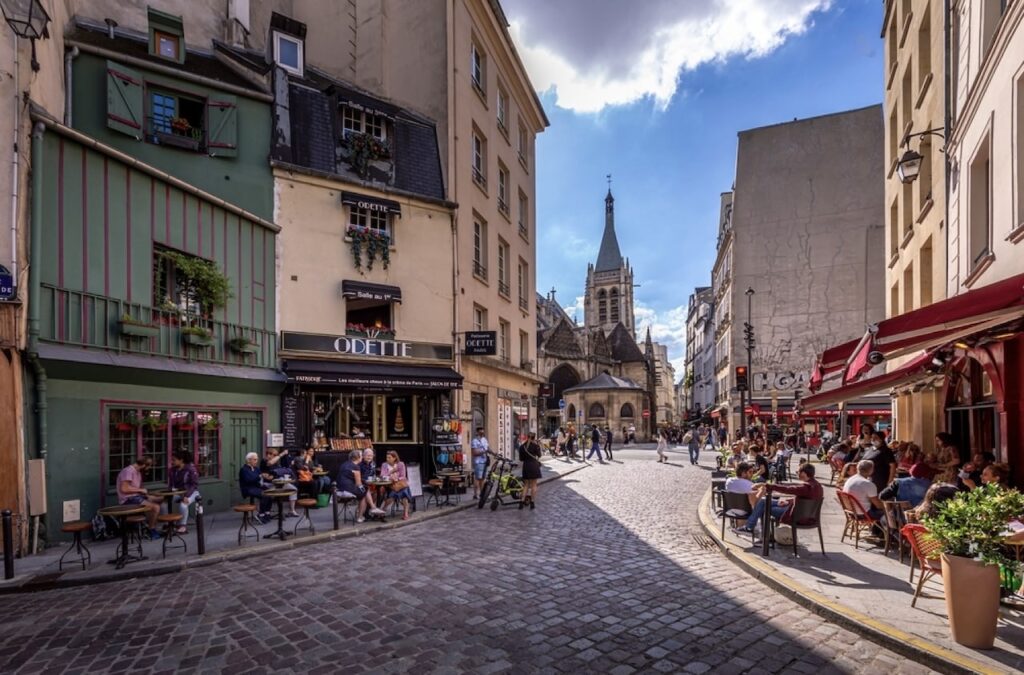
Latin Quarter
- The Latin Quarter is lively and youthful, home to the prestigious Sorbonne University and bustling with students. This vibrant area is famous for its many bookstores, including the legendary Shakespeare and Company, making it a haven for book lovers. Cozy cafés provide perfect spots for reading and relaxing. Explore historical sites like the Pantheon, where many notable figures are buried, and the beautiful Jardin des Plantes, a large botanical garden ideal for leisurely strolls.
The 1st Arrondissement
- Staying in the 1st arrondissement places you in the heart of Paris, offering convenient access to major landmarks such as the Louvre, Palais Royal, and Tuileries Garden. This area is renowned for luxury shopping around Place Vendôme and Rue Saint-Honoré, home to high-end fashion houses and jewelry stores. Additionally, cultural treasures like the Musée de l’Orangerie, featuring Monet’s Water Lilies, and the historic Comédie-Française theater are nearby.
How to Get Around Paris
Paris boasts an efficient public transportation system, including the metro, buses, and trams. Walking is also a great way to explore the city’s neighborhoods, and taxis or ride-sharing services are available for convenience.

Transportation Options
Metro
- Extensive Network: The Paris metro has 16 lines and over 300 stations, covering most of the city and its suburbs. Each line is numbered and color-coded, making it easy to navigate.
- Buying Tickets: Purchase single tickets, day passes, or a “carnet” of 10 tickets at metro stations. Consider a Navigo card for unlimited weekly or monthly travel.
- Using the Metro: Plan your route using maps or apps like Citymapper. Keep your ticket handy as you may need it to exit the station. Avoid the metro during rush hours (8-10 AM and 5-7 PM) for a more comfortable ride.
READ NOW: How to Ride the Metro in Paris
Buses and Trams
- Scenic Routes: Buses offer a scenic way to see the city. Lines like the 42 and 69 pass by many major attractions. Trams run along the edges of the city, offering views of less-touristy areas.
- Tickets and Schedules: Use the same tickets for buses and trams as for the metro. Check routes and schedules online or at stops. Buses are numbered, and tram lines are designated by T1, T2, etc.
- Tips for Riding: Enter buses at the front and exit at the rear. Validate your ticket when boarding. Trams have multiple doors for boarding, and tickets should be validated at the machines inside.
Walking
- Explore On Foot: Walking is one of the best ways to experience Paris. Many attractions are within walking distance of each other, especially in central neighborhoods.
- Comfort and Safety: Wear comfortable shoes, as cobblestone streets can be tough on your feet. Stay aware of your surroundings, especially in crowded tourist areas, to avoid pickpockets.
If you are on a lower budget or have just an hour or two, check out these highly-rated Paris iconic neighborhoods tours with local guides.
Taxis and Ride-Sharing Services
- Availability: Taxis are available throughout the city. Look for taxi stands or hail one on the street. Licensed taxis have a light on the roof and a meter inside.
- Ride-Sharing: Use apps like Uber or Bolt for convenient, app-based rides. Prices can be competitive, especially for short trips.
- Tips for Use: For taxis, make sure the meter is running to avoid overcharging. With ride-sharing, check the driver and vehicle details before getting in. Tipping is not mandatory but appreciated for good service.

Bicycles and Scooters
- Bike Rentals: Vélib’ Métropole offers a bike-sharing service with stations throughout the city. Rent a bike for a short ride or a full day.
- Scooter Rentals: Electric scooters like Lime and Bird are popular for quick, short-distance travel. Use the app to find and unlock scooters nearby.
- Safety Tips: Wear a helmet and follow traffic rules. Stick to bike lanes where available, and be cautious of pedestrians and cars.
TIP: If you are short on time, check out these bike tours (e-bike tours are ideal). They cover a lot of ground in just a few hours.
Best Attractions and Sightseeing Passes
Paris is home to world-renowned attractions such as the Eiffel Tower, Louvre, and Notre-Dame. Sightseeing passes like the Paris Pass and Museum Pass can save you money and time, providing entry to multiple sites and skipping long lines.

Must-See Attractions
Eiffel Tower
- Iconic Landmark: The Eiffel Tower is undoubtedly Paris’ most iconic symbol. Standing at 324 meters tall, it offers breathtaking views of the city from its observation decks.
- Visitor Tips: Book your tickets online in advance to avoid long queues. Consider visiting at night to see the tower beautifully illuminated and enjoy a different perspective of Paris.
Louvre Museum
- World’s Largest Art Museum: The Louvre houses over 35,000 works of art, including the Mona Lisa, the Venus de Milo, and the Winged Victory of Samothrace. It’s a treasure trove of art and history.
- Plan Your Visit: Allocate at least half a day to explore. The museum is vast, so prioritize the sections you want to see. Use the museum’s app or a guidebook to navigate.
Notre-Dame Cathedral
- Gothic Masterpiece: Notre-Dame is a stunning example of Gothic architecture, known for its intricate facade, magnificent rose windows, and flying buttresses.
- Visitor Experience: Although the cathedral suffered a devastating fire in 2019, its exterior remains impressive. Check the status of restoration work before visiting, as access may be limited.
Arc de Triomphe
- Historical Monument: Commissioned by Napoleon to honor the French army, the Arc de Triomphe stands at the western end of the Champs-Élysées. It commemorates those who fought and died for France in the Revolutionary and Napoleonic Wars.
- Climb to the Top: Climb the 284 steps to the top for a spectacular view of Paris, including the Eiffel Tower and the twelve avenues radiating from the Place Charles de Gaulle.


Sacré-Cœur Basilica
- Hilltop Basilica: The Sacré-Cœur Basilica, located at the highest point in Paris in Montmartre, offers stunning views of the city. Its white-domed structure is a striking landmark.
- Interior and Dome: Explore the basilica’s beautiful interior, adorned with mosaics and stained glass. Climb the dome for a 360-degree view of Paris.
Sightseeing Passes
Paris Pass
- The Paris Pass offers entry to over 60 attractions, including the Louvre, Arc de Triomphe, and a Seine River Cruise. This all-in-one pass covers major city sights and includes unlimited travel on the metro, buses, and trams within central Paris. Enjoy fast-track entry at popular sites, saving you hours of waiting time, especially during peak tourist seasons. Buy the Paris Pass – Unlock 60+ attractions and free public transport!
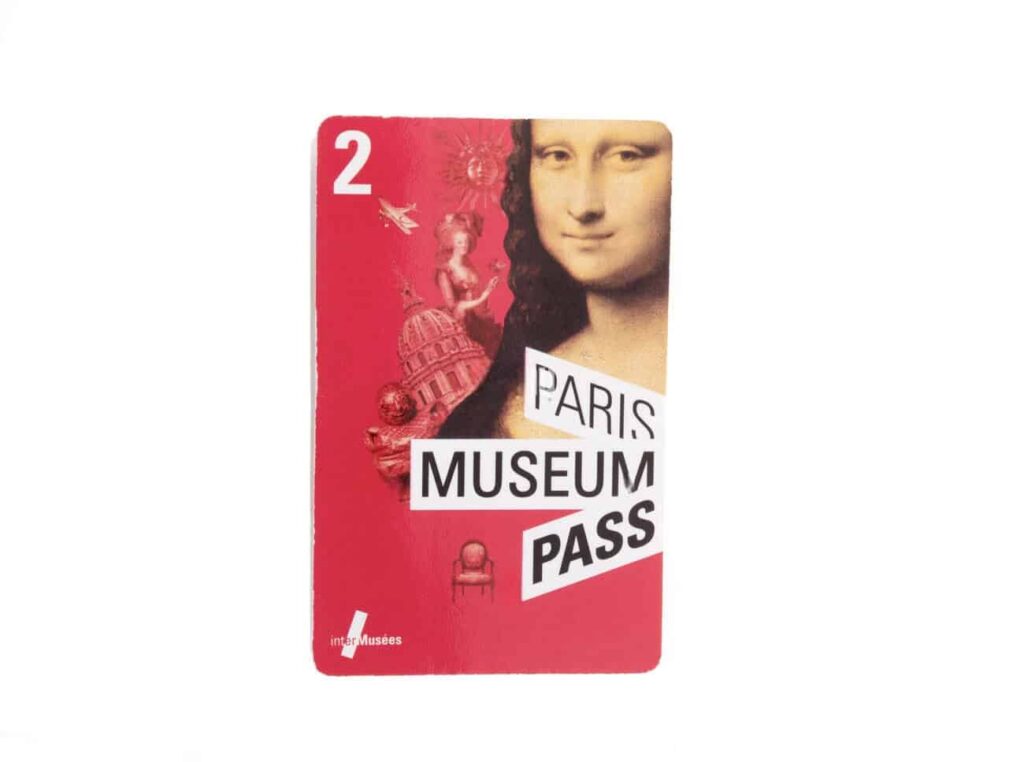
Paris Museum Pass
- The Paris Museum Pass provides access to over 50 museums and monuments, including the Musée d’Orsay, Centre Pompidou, and the Palace of Versailles. Available in 2, 4, or 6-day options, it offers flexibility to fit your travel schedule, allowing unlimited visits to your favorite museums within the pass’s validity. It’s perfect for those who want to immerse themselves in Paris’s cultural treasures at their own pace. Buy the Paris Museum Pass – Explore 50+ museums and monuments at your own pace!
Visit A Museum
Paris boasts some of the world’s most famous museums, each offering a unique glimpse into the city’s rich cultural and artistic heritage. From the iconic Louvre to the contemporary Centre Pompidou, visiting at least one museum is a must. Parisian museums house extraordinary collections and provide an immersive experience into the city’s history, art, and culture. Whether you’re an art enthusiast, history buff, or casual visitor, there’s something for everyone.
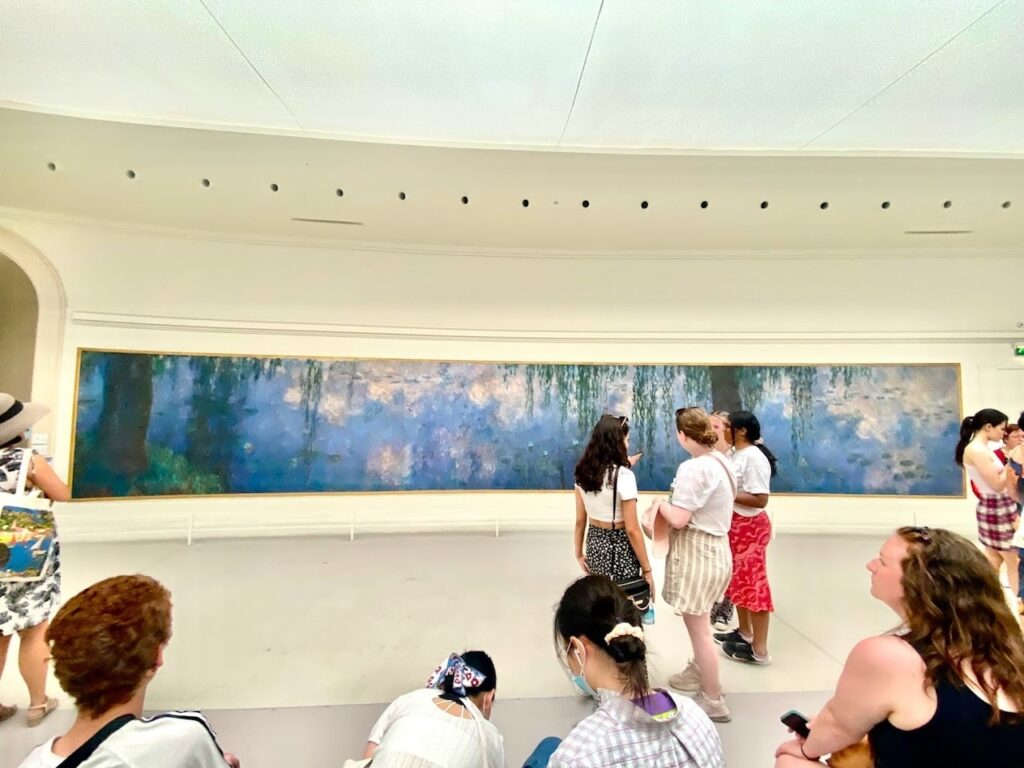
Top Museums
- Louvre Museum: The Louvre houses over 35,000 artworks, including the Mona Lisa, Venus de Milo, and Winged Victory of Samothrace. Allocate at least half a day to explore. Prioritize sections of interest and use the museum’s app or a guidebook for navigation. The glass pyramid entrance, a modern architectural marvel, contrasts beautifully with the historic palace, and the courtyard is perfect for photos. first time to paris
- Musée d’Orsay: Located in a former railway station, the Musée d’Orsay showcases masterpieces by Monet, Degas, and Van Gogh, including “Water Lilies,” “Starry Night Over the Rhône,” and “Little Dancer of Fourteen Years.” Arrive early to avoid crowds and use the free audio guides for an enhanced experience.
- Centre Pompidou: The Centre Pompidou is famous for its exposed, colorful architecture and houses one of Europe’s largest modern art collections, including works by Picasso, Kandinsky, and Matisse. It offers panoramic rooftop views and hosts temporary exhibitions, a public library, and performance spaces, making it a vibrant cultural hub.
- Musée de l’Orangerie: The Musée de l’Orangerie, located in the Tuileries Garden, is renowned for Monet’s Water Lilies murals in artist-designed oval rooms. It also features works by Cézanne, Renoir, and Picasso. Its compact size makes it perfect for a short visit after a garden stroll.
Lesser-Known Museums
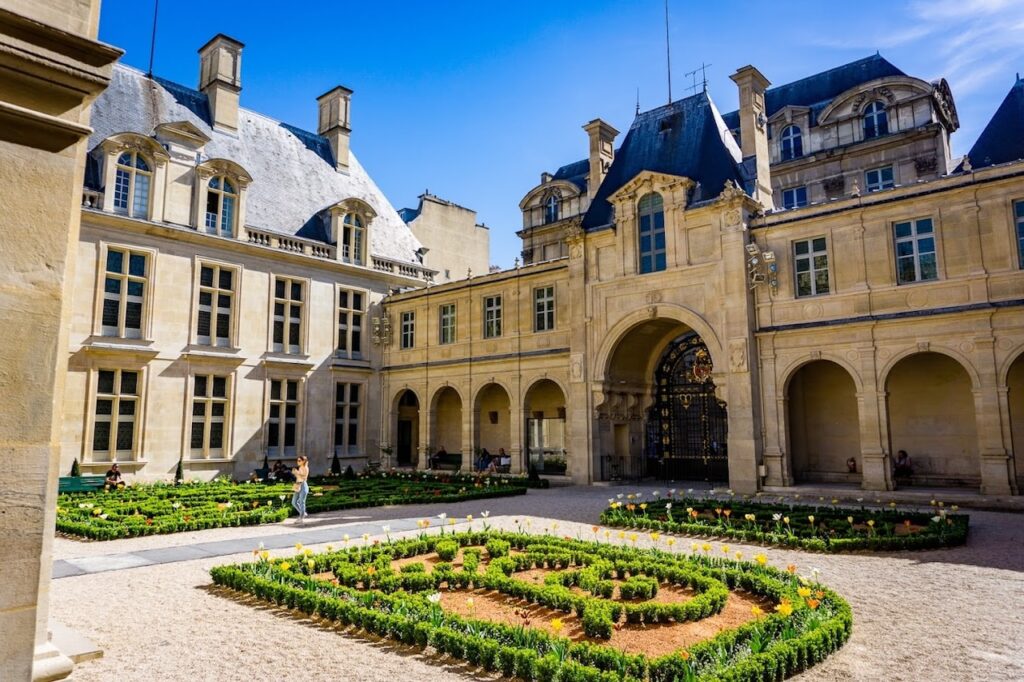
- Musée Marmottan Monet: This museum holds the largest collection of Claude Monet’s works, including “Impression, Sunrise.” Located in a quiet neighborhood, it offers an intimate, less crowded experience. It also features works by other Impressionist artists and medieval and Renaissance art. first time to paris
- Musée Jacquemart-André: This museum, housed in a stunning 19th-century mansion formerly owned by Edouard André and Nélie Jacquemart, features Italian Renaissance paintings, French art, Flemish masterpieces, and exquisite furniture. The audio guide provides insights into the collectors’ lives. Relax at the museum’s café, set in a room with a frescoed ceiling.
- Musée Carnavalet: This museum, located in two historic mansions in the Marais district, chronicles Paris’s history from its origins to the French Revolution and beyond. It features paintings, sculptures, furniture, and artifacts, with highlights including rooms from the time of Louis XVI and Marie Antoinette. Recent renovations have made it more accessible and engaging, with interactive displays that bring Paris’s history to life.
- Musée des Arts et Métiers: Housed in a former abbey, this museum showcases technological innovations and scientific discoveries. Highlights include Foucault’s pendulum, early automobiles, pioneering aircraft, and an extensive clock collection. Interactive exhibits and demonstrations make it engaging for both adults and children.
READ ALSO: Top Museums to Visit in Paris
Prepare for Airport-Style Security Checks Everywhere
In recent years, Paris has heightened its security measures in response to global and local security threats. Visitors should be prepared to encounter airport-style security checks at many popular tourist sites (Sainte-Chapelle comes to mind), museums, shopping centers, and public venues. Understanding what to expect and how to prepare can help you navigate these checks smoothly and avoid unnecessary delays. first time to paris
What to Expect During Security Checks
- Bag Inspections: Security personnel will typically inspect all bags and backpacks. Make sure your bag is easily accessible and organized to speed up the process.
- Metal Detectors: Many sites use metal detectors at entrances. Be prepared to remove items such as keys, phones, and coins from your pockets.
- Body Scans: In some cases, you may be asked to undergo a body scan. This is usually quick and straightforward.
- Prohibited Items: Certain items, such as large bags, sharp objects, and potentially dangerous materials, are not allowed. Check the specific site’s guidelines before your visit to avoid bringing prohibited items.
Security Tips
- Bag Checks: Expect bag checks at entrances. Travel light to expedite the process.
- Prohibited Items: Avoid carrying large bags or prohibited items like sharp objects.
- Patience: Allow extra time for security checks, especially during peak tourist seasons.
Visit a Local Café in Paris
Café culture is an integral part of Parisian life. Sitting at a café, sipping coffee, and people-watching is a quintessential Paris experience. Many cafés have historical significance and offer a glimpse into the city’s past.
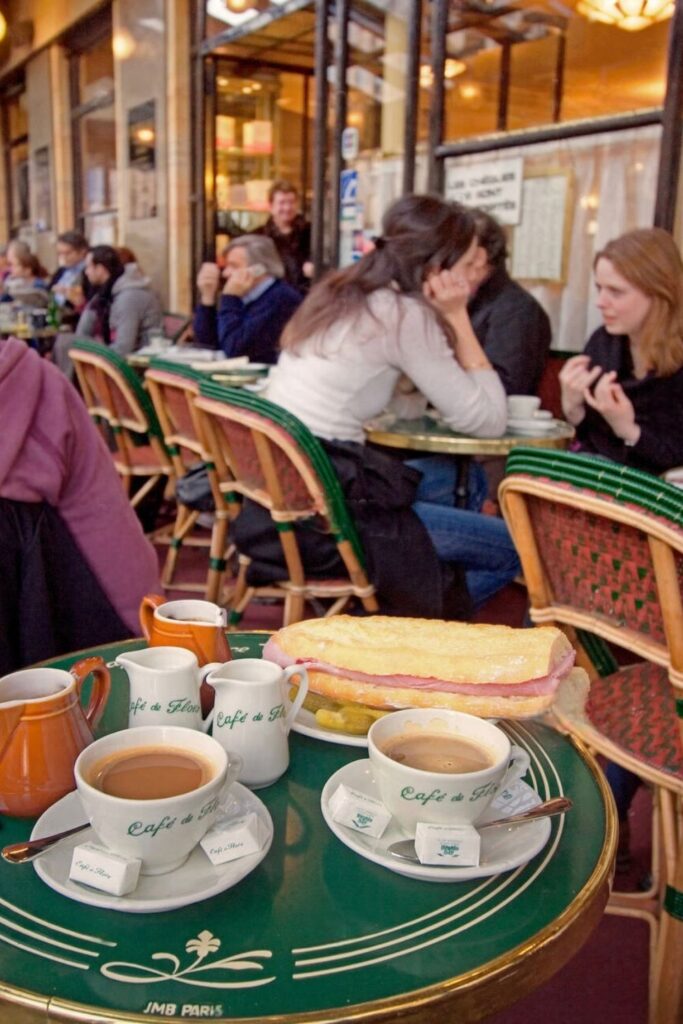
Café Recommendations
- Café de Flore: A historic Parisian café from the late 19th century, has been a gathering place for intellectuals like Jean-Paul Sartre and Simone de Beauvoir. Its classic Art Deco interior with red seating, mirrored walls, and mahogany tables sets the perfect ambiance. Enjoy a traditional French breakfast, their famous hot chocolate, or choose from a menu featuring salads, omelets, and pastries. first time to paris
- Café de la Paix: Situated near the Opéra Garnier, Café de la Paix boasts a stunning Belle Époque interior with gilded ceilings and plush seating, creating a luxurious ambiance. It has hosted many notable figures, from writers to celebrities. The menu features classic French cuisine, including onion soup, escargots, foie gras, and highly recommended desserts like mille-feuille and macarons.
- Les Deux Magots: Located in Saint-Germain-des-Prés, Les Deux Magots has a storied history with patrons like Hemingway, Joyce, and Picasso. The café offers a classic Parisian ambiance with outdoor seating for people-watching on Boulevard Saint-Germain. Enjoy a croque-monsieur, a glass of wine, and desserts like tarte Tatin and profiteroles.
- Le Vrai Paris: Le Vrai Paris in Montmartre offers an authentic Parisian café experience. Its charming exterior and vintage interior create a cozy atmosphere. After exploring Montmartre, unwind with sweet or savory crepes, quiche Lorraine, and a café crème or glass of wine.
Visit a Local Boulangerie
A visit to Paris isn’t complete without experiencing its boulangeries, essential to French daily life. These charming bakeries offer fresh baguettes, buttery croissants, and delectable pastries. Enjoying a local boulangerie provides authentic French cuisine and a glimpse into Parisian culture and traditions. Whether for a quick breakfast or picnic bread, a trip to a boulangerie is a quintessential Parisian experience. first time to paris
Boulangerie Highlights
- Croissants: Flaky, buttery, and best enjoyed fresh in the morning.
- Baguettes: A staple of French cuisine. Perfect for sandwiches or with cheese.
- Pastries: Try pain au chocolat, éclairs, and tarts for a sweet treat.
Boulangerie Recommendations
- Du Pain et des Idées: Famed for its traditional baking and high-quality ingredients. Located in a charming 19th-century building in the 10th arrondissement near Canal Saint-Martin, it offers an authentic Parisian experience. Try the “Pain des Amis,” perfect for sandwiches or with cheese, and the must-try “escargots” pastries, especially the pistachio-chocolate and praline varieties.


- Poilâne: Established in 1932, Poilâne is one of Paris’ most famous boulangeries, renowned for its rustic sourdough breads. Their signature “miche” is a tangy, round loaf. Don’t miss their buttery “punitions” (shortbread cookies) and apple tarts. Located on Rue du Cherche-Midi in the chic 6th arrondissement, Poilâne is near Saint-Germain-des-Prés, ideal for a visit to local cafés and boutiques.
- Le Grenier à Pain: Le Grenier à Pain, renowned for winning “Best Baguette in Paris,” is celebrated for its quality and tradition. Their baguette is crisp outside and chewy inside, perfect with cheese or charcuterie. They also offer delicious pastries like croissants and pain au chocolat. With several locations, including Montmartre, it’s easy to find a Le Grenier à Pain near popular tourist spots, making it a convenient stop during your explorations.
Pro Travel Tip: Looking to enjoy the best food in Paris? I recommend joining a Paris Food and Wine Tour and enjoy all of the local delicacies, including specialty crêpes, macarons, and wine. Also, in France – people make reservations for almost every meal which is part of the culture. If you try to swim upstream and not make an RSVP you’ll come home complaining. If you make RSVP in advance, you’ll come home full of happy memories. You decide!
Best Restaurants and Eating Out
Paris is a culinary paradise, offering diverse dining experiences for all tastes and budgets. From Michelin-starred restaurants to cozy bistros and lively food markets, the city caters to every palate. Whether you crave traditional French cuisine, modern dishes, or international flavors, Paris promises an unforgettable culinary journey. Dining in Paris is about the food, ambiance, service, and the overall experience of savoring each bite in the City of Light. first time to paris
Dining Experiences
Michelin-Starred Restaurants
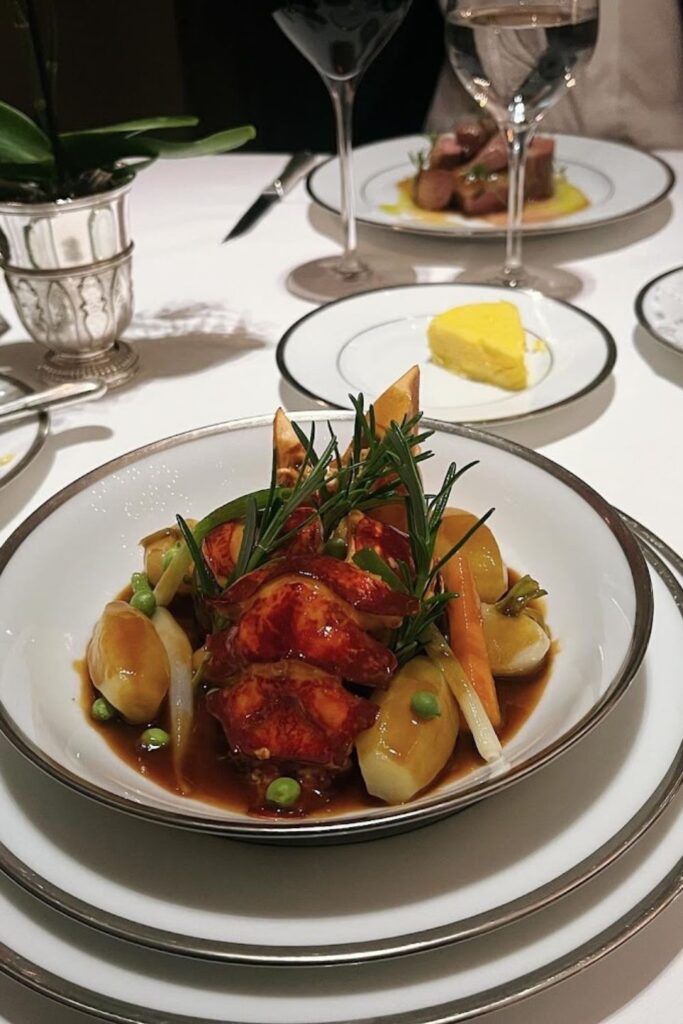
- Le Meurice: Located in the luxurious Le Meurice hotel, this restaurant offers an exceptional dining experience with its opulent decor and two Michelin stars. Chef Alain Ducasse’s menu celebrates French haute cuisine with dishes like blue lobster and milk-fed lamb.
- L’Ambroisie: Situated on the elegant Place des Vosges, L’Ambroisie has earned three Michelin stars for its impeccable cuisine and service. Chef Bernard Pacaud’s creations, such as sea bass with artichoke and truffle sauce, highlight the best of French gastronomy.
Bistros
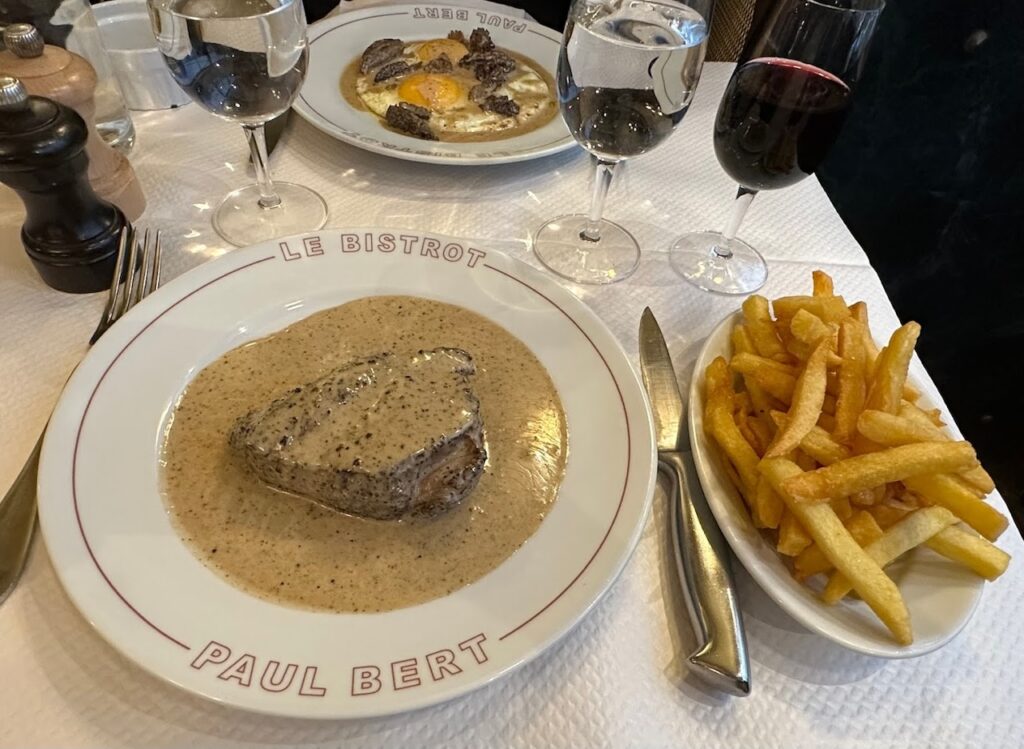
- Le Comptoir du Relais: This popular bistro in the 6th arrondissement offers a cozy, casual dining experience with a focus on traditional French dishes. Chef Yves Camdeborde’s menu includes hearty classics like duck confit and beef tartare.
- Bistrot Paul Bert: Known for its authentic Parisian charm, Bistrot Paul Bert in the 11th arrondissement serves classic French bistro fare. Signature dishes include steak frites, foie gras, and their renowned Paris-Brest dessert.
READ ALSO: Best Traditional French Dishes to Try in France
Budget-Friendly Options
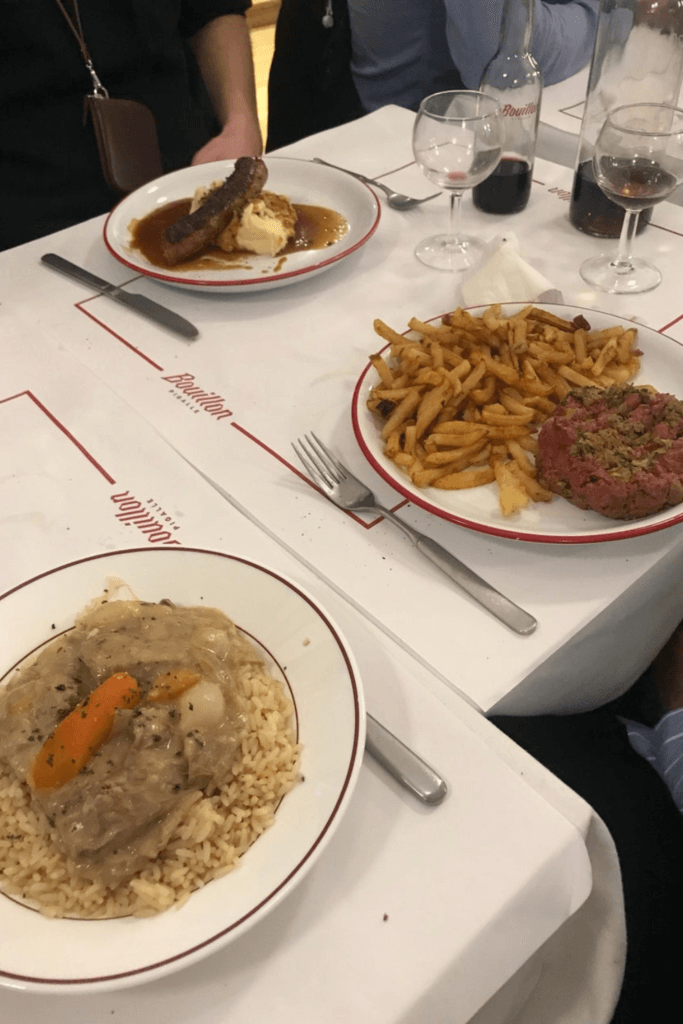

- Crêperie Breizh Café: Located in Le Marais, this crêperie offers delicious and affordable Breton-style crepes. Choose from savory galettes made with buckwheat flour or sweet crepes with a variety of toppings. first time to paris
- L’As du Fallafel: This iconic eatery in the Jewish Quarter of Le Marais is famous for its generous and flavorful falafel sandwiches. It’s a must-visit for vegetarians and anyone looking for a tasty, budget-friendly meal.
- Bouillon Pigalle: Located in the lively Pigalle district, Bouillon Pigalle offers traditional French cuisine at incredibly affordable prices. This modern take on the classic Parisian bouillon provides hearty, home-style meals in a vibrant setting.
Food Markets
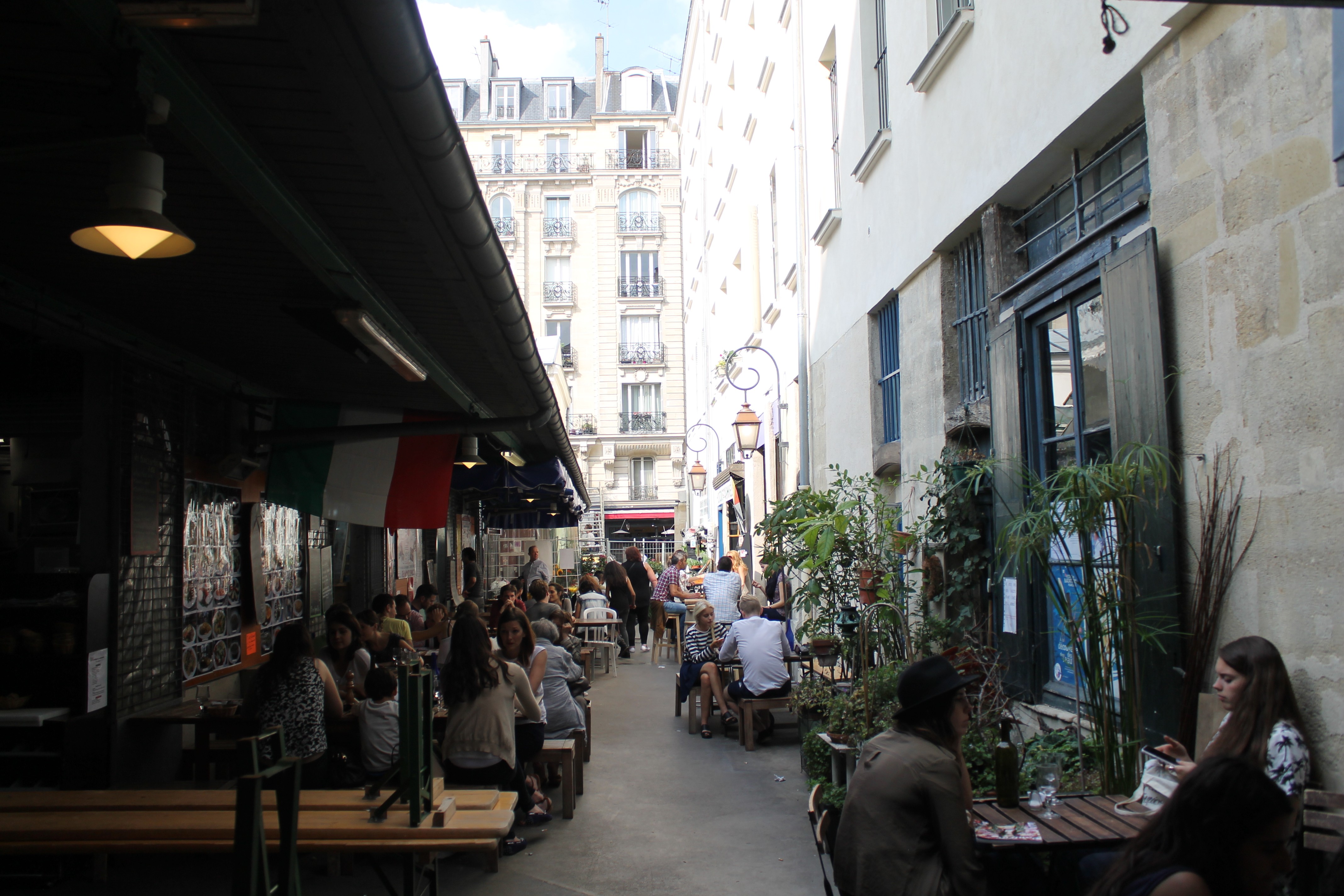
- Marché des Enfants Rouges: Paris’ oldest covered market, located in the 3rd arrondissement, offers a variety of food stalls serving everything from Moroccan tagines to fresh sushi. It’s an excellent spot to sample different cuisines.
- Marché d’Aligre: This market in the 12th arrondissement is known for its fresh produce, cheese, and meats. The adjacent covered section, Marché Beauvau, offers more food stalls and delicacies.
Tips for Dining Out
- Reservations: Many popular restaurants and bistros require reservations, especially for dinner. Book in advance to ensure a spot, and consider calling ahead if you’re planning to dine at a high-demand eatery. first time to paris
- Etiquette: Greet the staff with a polite “Bonjour” when entering. Meals are meant to be enjoyed leisurely, so don’t rush. Tipping is not mandatory, as service is included, but small tips for exceptional service are appreciated.
- Local Specialties: Try regional specialties like escargots, duck confit, and crème brûlée. Paris also offers a range of international cuisines, so don’t hesitate to explore beyond traditional French dishes.
Beware of Scams and Pickpockets
Paris is one of the most visited cities in the world, attracting millions of tourists each year. While it is generally safe, its popularity also makes it a target for scams and pickpockets. Staying vigilant and being aware of common tactics can help you protect yourself and enjoy a worry-free trip.
Common Scams to Watch Out For
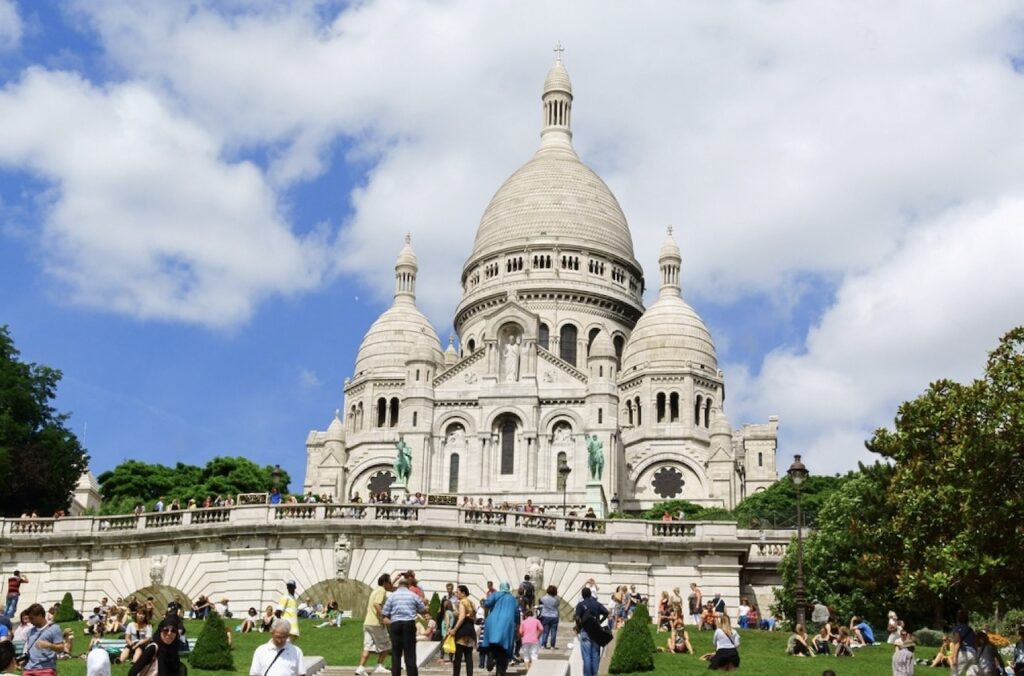
Friendship Bracelet Scam
- How It Works: Scammers, often near tourist hotspots like Montmartre or the Eiffel Tower, approach you with a friendly smile and offer to make you a “friendship bracelet.” They tie it around your wrist and then demand payment. first time to paris
- Avoidance Tips: Politely but firmly decline any unsolicited offers. Keep your hands close to your body to prevent anyone from grabbing your wrist.
Petition Scam
- How It Works: Usually young individuals, often women or children, approach you with a clipboard and ask you to sign a petition. While you’re distracted, an accomplice may pickpocket you.
- Avoidance Tips: Ignore and walk away from anyone asking you to sign something in a crowded area. Keep your belongings secure and close to your body.
Gold Ring Scam
- How It Works: A scammer pretends to find a gold ring on the ground and offers it to you, claiming it doesn’t fit them. They then ask for a reward or claim it’s a good luck charm for which you should pay.
- Avoidance Tips: Simply say no and walk away. Don’t engage in conversation or take the ring.
Fake Charity Scam
- How It Works: Someone approaches you with a convincing story about collecting money for a charity. They may have official-looking documents or badges.
- Avoidance Tips: Politely decline and move on. Genuine charities rarely solicit donations in busy tourist areas.
Tips for Keeping Your Belongings Safe
Use a Money Belt
- Secure Storage: A money belt worn under your clothes is a discreet way to carry cash, credit cards, and important documents. It’s difficult for pickpockets to access. This is the money belt I use for a credit card and small change.
- Peace of Mind: Knowing your valuables are securely hidden allows you to enjoy your sightseeing without constant worry.
Anti-Theft Bags
- Special Features: Invest in bags with anti-theft features such as lockable zippers, slash-resistant straps, and RFID-blocking pockets. I’ve also had good experience with this Travelon Cross Body bag.
- Backpack Tips: If you’re using a backpack, wear it in front of you in crowded places. Avoid carrying valuables in outer pockets.
Stay Aware of Your Surroundings
- Vigilance: Always be aware of who is around you, especially in crowded areas like metro stations, tourist attractions, and markets.
- Avoid Distractions: Scammers often work in pairs or groups to distract you while they pickpocket you. Stay alert and avoid getting too engrossed in your phone or map.
So, these are some of the most useful tips and tricks for Paris that you may want to know when traveling to the city for the first time. first time to paris
Have a great trip to Paris!
TIP: You may also like to read my similar guides with tips for some of the most popular cities in France:




